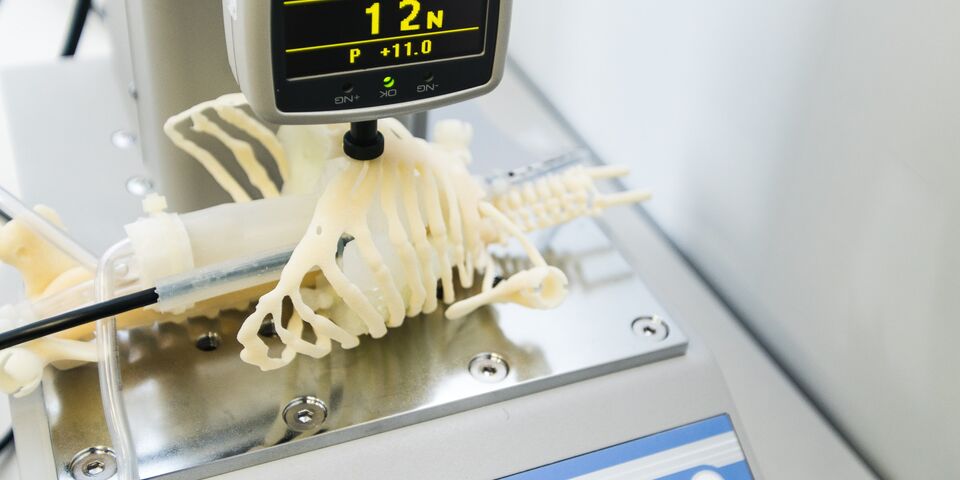A baby from the printer
In matters of life and death it is advisable to be well-prepared. Therefore PhD candidate Mark Thielen (Industrial Design) is building a realistic dummy full of sensors to teach doctors how to resuscitate a new-born baby. He made the skeleton, heart and lungs by means of a 3D printer on the basis of MRI scans of real babies.
Ever since he was a second-year student of Industrial Design, the question has been bugging Mark Thielen: how do you make an - affordable - realistic resuscitation dummy, with which doctors can exercise their life-saving actions – artificial respiration and heart massage - optimally?
When he got the opportunity as a PhD candidate to make a truly realistic training dummy, Thielen seized it with both hands. Via a Nijmegen doctor he succeeded in obtaining a three-dimensional MRI scan of a new-born baby. On the basis of this scan he had the bones of the child’s skeleton printed at natural size by means of a 3D printer. Then he started looking for material with the right mechanical properties: crucial if you want to learn how hard you need to press the breastbone of a baby to compress the chest about one-third, which is necessary for an effective heart massage.
This resulted in a whole series of rib cages, most of which were printed at Industrial Design itself. He printed a rib cage of a relatively hard TPU rubber via 3D Hubs, an online portal used for finding the right printer for each 3D design. The PhD candidate did not print the soft organs directly – he had them cast in molds that were then printed in 3D again. “That is really the only way to make an anatomically correct heart of rubber.”
At least as important as how realistic the dummy looks, is the feedback it has to provide. At present protocols for CPR (cardiopulmonary resuscitation) are predominantly based on experience and intuition – it stands to reason that controlled experiments are difficult in emergency situations. This is why the CPR dummy will be full of sensors, which measure the blood pressure in both halves of the heart, the fluid flow in the aorta and pulmonary artery, and air pressure and volume of both lungs. And as it is essential for artificial respiration that the windpipe is free, there will also be sensors measuring the bending of the neck and the height of the jaw.
At the end of this year the dummy must be fully finished, says Thielen. Then his 3D-printed creation must be able to compete with the prohibitively expensive CPR dummies that are already on the market. “I think it should be possible to make this dummy for less than 5,000 euros. This is important, because hospitals will not easily purchase more expensive dummies, or they will be used too little for fear of breaking down.”
Since 3D Hubs decided earlier this month to devote a press release to Thielen’s project, it has been a madhouse: the big British tabloid Daily Mail reported extensively about his ‘3D printed baby’, whereupon De Telegraaf and numerous national and international websites followed suit. “Discovery Channel Canada is making an item and Scientific American is also working on one. All of that is very nice, but also quite intense. Before long I really do want to get back to work again.”






Discussion